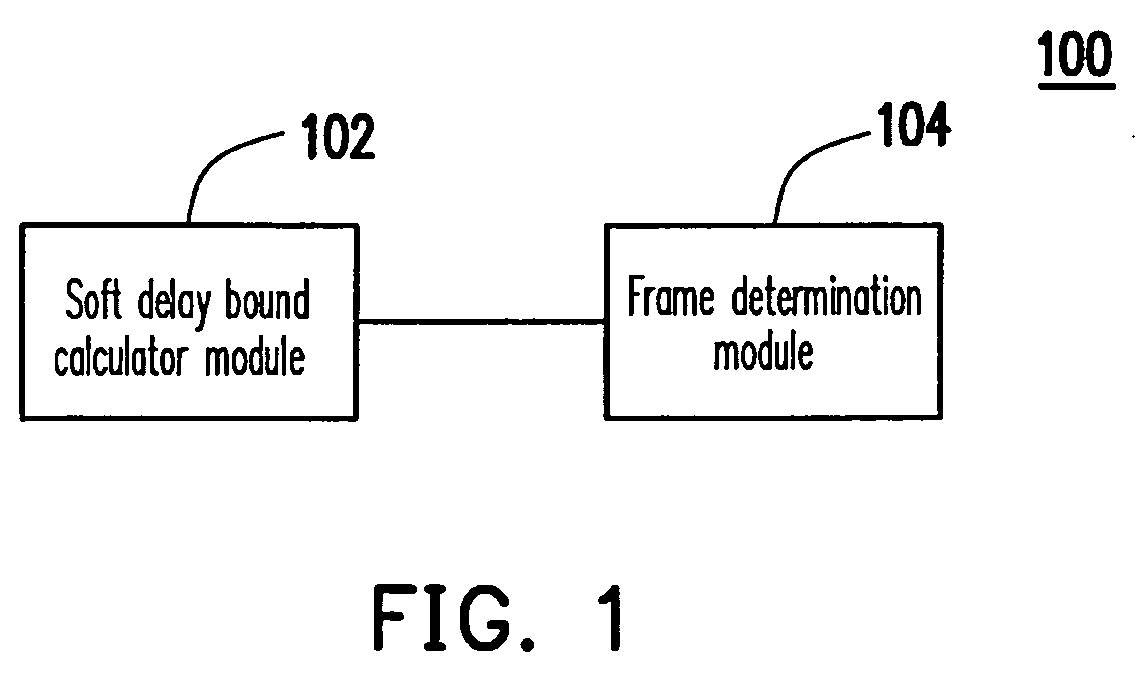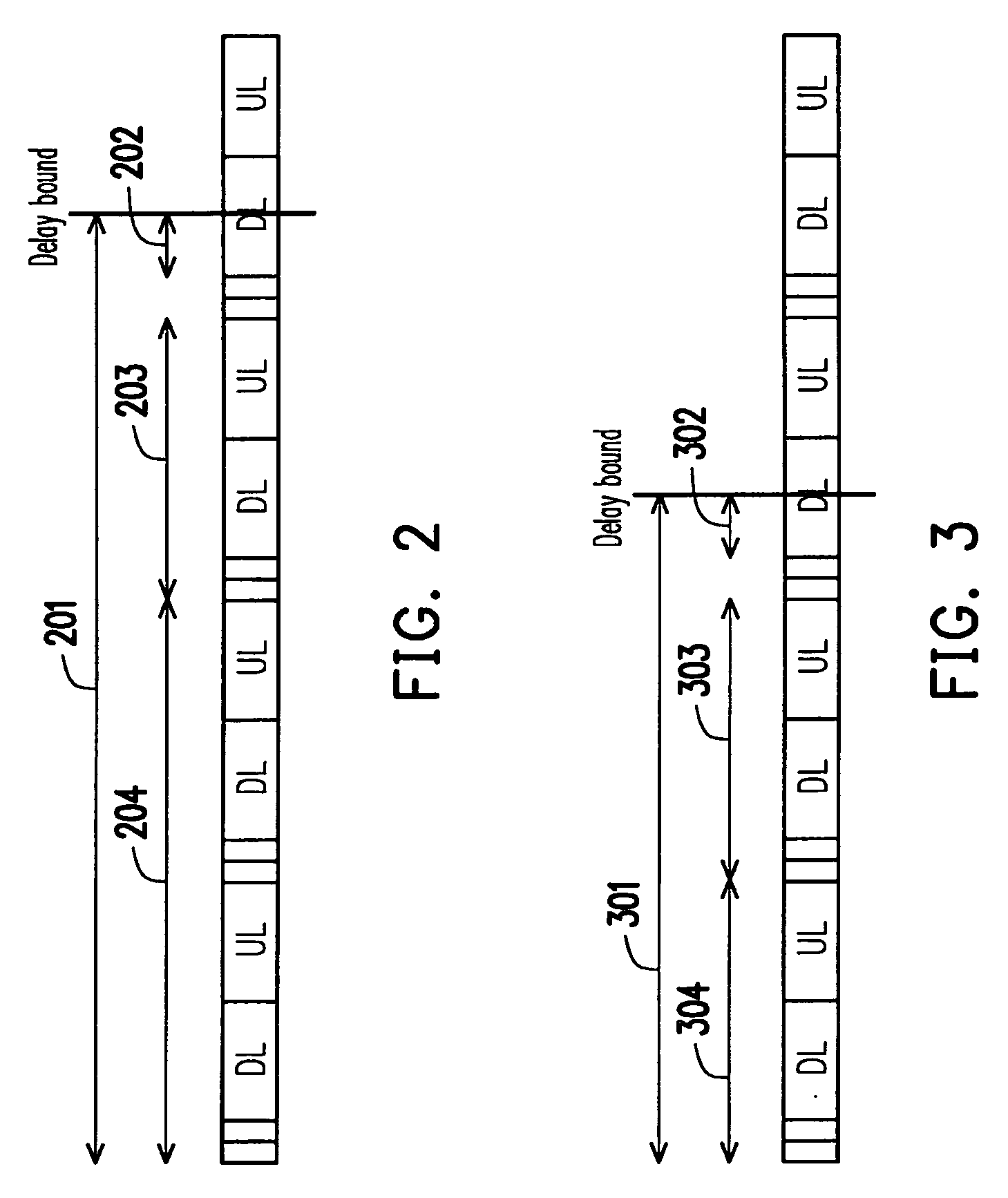System, method, and recording medium for scheduling packets to be transmitted
a scheduling packet and recording medium technology, applied in the field of scheduling methods, can solve the problems that the conventional method for scheduling packets to be transmitted cannot meet the requirements of qos nor achieve optimal transmission performance, and the conventional method for scheduling packets to be transmitted is impossible to effectively support non-real-time services, so as to improve the performance and capacity of the system
- Summary
- Abstract
- Description
- Claims
- Application Information
AI Technical Summary
Benefits of technology
Problems solved by technology
Method used
Image
Examples
first embodiment
The First Embodiment
[0052]FIG. 1 is a block view of a system for scheduling packets to be transmitted according to a first embodiment of the present invention.
[0053]Referring to FIG. 1, the system 100 for scheduling packets to be transmitted is used to schedule packets to be transmitted in a WiMAX 802.16e system. In detail, the system 100 for scheduling packets to be transmitted schedules and controls the packets to be transmitted by taking the type of traffic passing through a network layer, radio frequency feedback conditions from the physical layer, and information from a media access control layer into account. It should be noted that the 802.16e system includes a packet classifier (not shown), for classifying the plurality of packets to be transmitted into real-time packets and non-real-time packets. The system 100 for scheduling packets to be transmitted includes a soft delay bound calculator module 102 and a frame determination module 104. However, it should be appreciated th...
second embodiment
The Second Embodiment
[0067]In the first embodiment, the concept of the soft delay bound defined by the present invention is adopted to make the system for scheduling packets to be transmitted consider the QoS of the real-time packets and non-real-time packets at the same time. However, in this embodiment, the packets are grouped based on the soft delay bound of each of the non-real-time packets and the delay bound of each of the real-time packets. Then, the packets to be transmitted at a current frame are selected according to the channel conditions of the packets, so as to avoid the problem that the resources are insufficient for transmitting the packets due to channel unbalance. This embodiment will be illustrated in detail below in accompanied with FIGS. 5 to 7.
[0068]FIG. 5 is a block view of a system for scheduling packets to be transmitted according to a second embodiment of the present invention.
[0069]Referring to FIG. 5, the system 500 for scheduling packets to be transmitted...
third embodiment
The Third Embodiment
[0081]In the first embodiment, the concept of the soft delay bound defined by the present invention is adopted to make the system for scheduling packets to be transmitted consider the QoS of the real-time packets and non-real-time packets at the same time. In the second embodiment, the packets are grouped based on the soft delay bound of each of the non-real-time packets and the delay bound of each of the real-time packets, and then the packets to be transmitted at a current frame are selected according to the channel conditions of the packets, so as to avoid the problem that the resources are insufficient for transmitting the packets caused by the channel unbalance. However, the methods in the first and second embodiments may be combined for scheduling packets.
[0082]FIG. 8 is a block view of a system for scheduling packets to be transmitted according to a third embodiment of the present invention.
[0083]Referring to FIG. 8, the system 800 for scheduling packets t...
PUM
 Login to View More
Login to View More Abstract
Description
Claims
Application Information
 Login to View More
Login to View More - R&D
- Intellectual Property
- Life Sciences
- Materials
- Tech Scout
- Unparalleled Data Quality
- Higher Quality Content
- 60% Fewer Hallucinations
Browse by: Latest US Patents, China's latest patents, Technical Efficacy Thesaurus, Application Domain, Technology Topic, Popular Technical Reports.
© 2025 PatSnap. All rights reserved.Legal|Privacy policy|Modern Slavery Act Transparency Statement|Sitemap|About US| Contact US: help@patsnap.com



